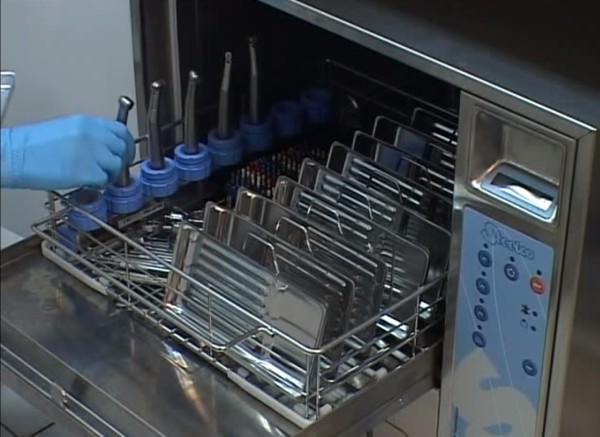 Chemical sterilization
Chemical sterilization
Sterilization is a complex of complex measures aimed at eliminating pathogenic microflora. It can be produced by physical or chemical action on materials. In medicine, all instruments, devices and devices that come into contact with blood, mucous membranes or wound surfaces are subjected to mandatory sterilization treatment.
Chemical sterilization consists in the treatment of a product that is unstable to thermal effects with a gas or chemical in the form of a solution.
Gas chemical sterilization
This method is intended for products that cannot withstand high temperatures.
Sterilization in gas sterilization cabinets is carried out using ethylene oxide, ozone, or vapors of a mixture of formaldehyde and ethyl alcohol.
Strictly observing the temperature regime recommended for a particular gaseous agent and the workpiece. Before sterilization, the instrument is disassembled and thoroughly dried, packed in smooth or crepe paper, preference is given to imported packaging with thermal indicators. Depending on the type of packaging and its hermetic properties, the storage of processed items is possible from 2 weeks to 5 years. The process of gas sterilization ends with the obligatory degassing of products. Place them in a fume hood for at least 4 hours.

Chemical sterilization
Sterilization in chemical solutions
It is used to achieve the sterility of products, the design of which contains heat-labile parts.
The chemical sterilization method is recommended for rubber, polymer, glass instruments, which for the most part cannot withstand high temperatures. To carry out sterilization by this method, it is necessary to ensure that the product is completely immersed in a disinfectant solution.
Be sure to strictly observe the exposure time, the creation of absolute contact between the solution and the tool. The most effective sterilization takes place in disassembled form, with the filling of all channels and cavities with a sterilizing agent. Processing is carried out in tightly closed containers. Sterilization utensils can be plastic, glass or metal with an enamel coating. Before use, pre-heat treatment of dishes is required.
Chemical sterilization is usually carried out using solutions:
- Bianola 20% or Gigasept FF 10%, used once, exposure time 10 hours.
- Lysoformin-3000 8% or Deconex 50 Plus 8%, used once, exposure time 1 hour.
- Sideks, can be used more than once within 14 days, the exposure time is 3-5 hours.
At the end of the sterilization time, the instrument is treated twice with sterile liquid in special sterile dishes. After processing, the product can be stored for no more than 3 days. For this, sterilization boxes or UFO cabinets are used.
The chemical sterilization method has a number of disadvantages:
- The processing procedure is quite laborious and lengthy.
- Strict observance of asepsis measures is mandatory.
- Short storage of products after sterilization.
- High cost of chemical solutions.